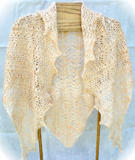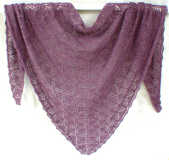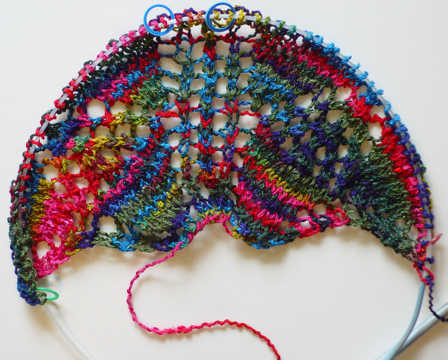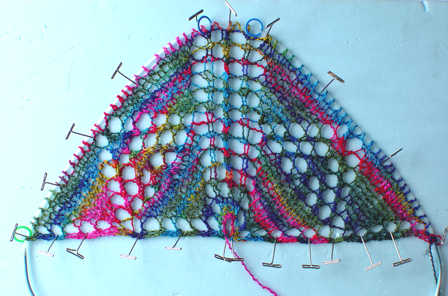
|
HeartStrings FiberArts
Inspiration & Patterns for Wearable Art in Timeless Styles |
| What's New Gallery Catalog Resources Meet Jackie E-S |
♥ PRODUCTS ♥The Pattern CollectionsEasy Knitting Scarves/Stoles Faroese Shawls Other Shawl Shapes Sweaters & Vests Socks & Fun Footwear For the Hands Neck & Up Coverings For the Man For Baby Home Decor Jewelry Minis and Miscellany Bookmarks Toys Holidays & Seasons Comfort Collection I Hate to Purl All Beaded Patterns PDF Pattern Catalog Patterns by Yarn Weight Tutorials ♥ SHOPPING ♥Downloadable PatternsRavelry KnitHeartStrings Kits and Supplies ♥ STAY IN TOUCH ♥Newsletter ArchiveJackie's Blog ♥ A GIFT FOR YOU ♥
"Your patterns are just fabulous ... unique and yet based on tradition."
- Jennifer C.
"I just love the simplicity of your patterns and the complexity of their appearance."
- Maureen M.
"
"I enjoy your website. It is easy to use and full of information ..."
- Debby L.
"... I love Heartstrings patterns. They are clear and well presented and Jackie Erickson-Schweitzer, the designer, is just a lovely, inspiring woman - well worth supporting by the purchase of the pattern."
- Kimberly L.
|
Triangle Shawl GuidelinesMake the size triangle shawl you want in any of 4 yarn weights
| ||||||||||||||||||||||||||
|
LENGTH FROM CENTER-BACK NECKLINE TO TIP OF TRIANGLE |
||
YARN TYPE |
36 - 40” full-length shawl |
24 - 30” shawlette or mid-length shoulder shawl |
18” neckerchief |
Lace weight |
1250 – 1525 yards (1150 - 1400 m) |
550 – 850 yards (500 -775 m) |
300 yards (275 m) |
Fingering weight |
1000 – 1250 yards (925 – 1150 m) |
450 – 700 yards (400 – 650 m) |
250 yards (225 m) |
Sport / DK weight |
900 – 1100 yards (825 – 1000 m) |
400 – 625 yards (350 – 575 m) |
225 yards (200 m) |
Worsted weight |
800 – 1000 yards (725 – 925 m) |
350 – 550 yards (325 – 500 m) |
200 yards (185 m) |
Needles
A rule of thumb is to use needles 3 to 4 sizes larger than suggested on your yarn’s label. The reason for this is that yarn label gauge is typically for a sweater fabric. But shawls are intended to have a drapier, flowing fabric than a body-fitting, firm fabric sweater. Thus, the increase of the needle size will allow the stitches to move more freely (but you don't want to increase the needle size so much that you get a flimsy fabric).
If you are dealing with an unknown yarn without an unlabeled or handspun yarn where suggested needle size is not available, you can use the Knitting Needle Gauge method to estimate a yarn label needle gauge as the the starting point, then go up 3 to 4 sizes from there.
Based on the yarn type, you can also use my guidelines to select a needle size:
For lace weight yarn, use US 4 or 5 (3.5 – 3.75 mm)
For fingering weight yarn, use US 6 or 7 (4 – 4.5 mm)
For sport or DK weight yarn, use US 8 or 9 (5 – 5.5 mm)
For worsted weight yarn, use US 10 or 10½ (6 – 6.5 mm)
Checking Your Work
HeartStrings designs for triangle shawls start at the lower back point or center back neckline or side tail with just a few stitches while you become familiar with your yarn and the stitch patterns. Examples are
Elegantly Simple Triangle Shawl
starts at the lower back point and worked bottom to top |
Triangles within Triangles
starts at upper center back neckline and worked top to bottom |
|---|
This is the beginning of your shawl, but it is also a sample that can be easily redone if you mess up while you are first practicing, or things aren't working out with your chosen yarn and/or needles.
Stop after every few rows and take a moment to observe your knitting so far. Feel it; fondle it. Stretch it out a bit to open up the lace and get a sense of what the resulting fabric will look like. If everything looks all right, then proceed. If not, start over with smaller or larger needles, or even a different yarn. If you aren't quite sure, continue on until you have done enough for a Blocking in Progress.
Blocking in Progress
Just because you start knitting your triangle shawl without a traditional swatch doesn't mean you have to worry throughout your project to see if you like are going to like your shawl after it is blocked.
I seldom make a traditionals sample swatch when working shawls that start on a few stitches. But I do believe in the merits of sampling. Whenever possible, I use the beginning of my projects to serve as my samples. This gives me a good-sized swatch, rather than hurrying through a too-small separate swatch that will be less valuable.
Blocking is something we usually think of as only doing in the final stages of completing the article — usually the very last thing! By blocking our sample swatch, it becomes a mini-vision of our final project — it is an early indicator of gauge/size, hand and look of the fabric. I call this blocking in progress.
Return to Index of Jackie E-S Articles & Tips.
|





